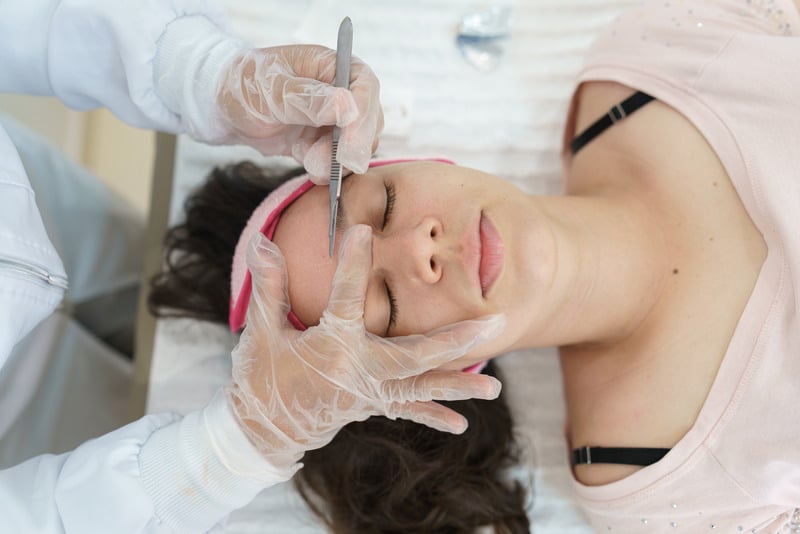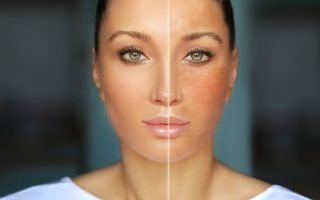What is Dermaplaning?
Dermaplaning is a skincare treatment that involves gently scraping off dead skin cells and tiny facial hairs (often called peach fuzz) using a special tool. This can make your skin look smoother and brighter. Many people go to a dermatologist for this treatment, but you can also do it at home if you follow some simple steps.
Why Try Dermaplaning at Home?
Doing dermaplaning at home can save you time and money. You don’t have to book an appointment or pay for a professional service. Plus, you can do it whenever it fits into your schedule. However, it’s important to be careful and use the right tools to avoid any harm.
Is Dermaplaning at Home Safe?
Dermaplaning at home can be safe if you follow the right steps and use clean, high-quality tools. Dr. Sarah Lee, a board-certified dermatologist from The Dermatology Group, warns that dermaplaning is an invasive procedure. If you’re not trained and using sanitized tools, you could risk serious harm. So, always make sure your tools are clean and you know what you’re doing.
What Do You Need?
To start dermaplaning at home, you will need:
- A dermaplaning tool or a clean, sharp razor
- A gentle cleanser
- A soothing moisturizer
- A mirror
- Good lighting
How to Dermaplane at Home
Step 1: Clean Your Face
First, wash your face with a gentle cleanser to remove any dirt or makeup. This helps to prevent any infections.
Step 2: Prepare Your Tool
Make sure your dermaplaning tool or razor is clean. You can wipe it with alcohol to sanitize it.
Step 3: Start Dermaplaning
Hold your skin tight with one hand and gently scrape the tool across your skin at a 45-degree angle. Do this in small, downward strokes. Be careful around sensitive areas like your eyes and lips.
Step 4: Moisturize
After you’re done, apply a soothing moisturizer to calm your skin.
Tips for Safe Dermaplaning
- Use a Clean Tool: Always use a clean, sharp tool to avoid infections.
- Be Gentle: Don’t press too hard. Gentle strokes are enough to remove dead skin cells and peach fuzz.
- Avoid Sensitive Areas: Be extra careful around your eyes and lips.
- Don’t Overdo It: Dermaplane once a week at most to avoid irritating your skin.
What to Expect
Dr. Michelle Henry, a board-certified dermatologist from Henry Dermatology, says that dermaplaning at home primarily removes vellus hair and dead skin cells. This can make your skin look smoother and brighter, but it won’t address deeper concerns like acne scars or wrinkles.
Who Should Avoid Dermaplaning?
If you have active acne, eczema, or rosacea, it’s best to avoid dermaplaning. These conditions can make your skin more sensitive and prone to irritation. Always consult a dermatologist if you’re unsure.
Personal Experience
I tried dermaplaning at home for the first time last month. I was a bit nervous, but I followed the steps carefully. My skin felt so smooth afterward, and my makeup went on much better. I did get a small nick on my chin, but it healed quickly. Now, I make sure to be extra careful around that area.
Expert Opinions
Dr. David Lortscher, a board-certified dermatologist from Curology, says that dermaplaning at home can be a great way to achieve a smoother, brighter complexion. However, it’s crucial to choose high-quality, sterile tools and practice proper technique. Always consult a dermatologist for advice on whether it’s right for your skin type.
Dr. Dendy Engelman, a board-certified dermatologist from Manhattan Dermatology and Cosmetic Surgery, adds that dermaplaning at home can be a safe and effective option for those with mild skin concerns like peach fuzz and uneven skin texture. However, it’s essential to understand your skin’s limitations and seek guidance from a professional if you have any doubts.
Studies on Dermaplaning
A study published in the Journal of Cosmetic Dermatology examined the safety and effectiveness of home-use dermaplaning devices. The study found that while these devices can be effective, there are potential risks and complications if not used properly.
Another study in the Journal of Clinical and Aesthetic Dermatology focused on the effectiveness of dermaplaning for treating hyperpigmentation. The study concluded that dermaplaning can be effective for this purpose when performed by trained professionals.
Conclusion
Dermaplaning at home can be a safe and effective way to achieve smoother, brighter skin. However, it’s important to use clean, high-quality tools and follow the right steps to avoid any harm. Always consult a dermatologist if you’re unsure whether dermaplaning is right for your skin type. With the right care and attention, you can enjoy the benefits of dermaplaning from the comfort of your own home.
FAQs
Is dermaplaning painful?
No, dermaplaning should not be painful. If you feel pain, you might be pressing too hard or using a dull tool.
How often should I dermaplane?
Once a week is usually enough. Overdoing it can irritate your skin.
Can I wear makeup after dermaplaning?
Yes, you can wear makeup after dermaplaning. In fact, many people find that their makeup goes on smoother after dermaplaning.
What should I do if I cut myself?
If you cut yourself, clean the area with water and apply a small amount of antibiotic ointment. Cover it with a bandage if needed.
Can men dermaplane?
Yes, men can dermaplane too. It can help remove dead skin cells and make the skin look smoother.
By following these simple steps and tips, you can safely and effectively dermaplane at home. Enjoy your smoother, brighter skin!




